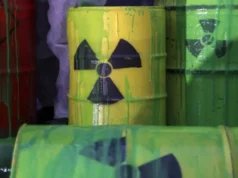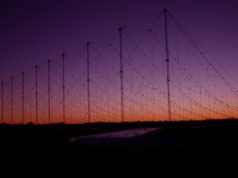MARITIME SURVEILLANCE OF IOR COMBINED WITH ANTI SUBMARINE ROLE
By
Colonel Awadhesh Kumar, Special Forces
Right after Balakot thrashing, one of the AIP equipped Pakistani submarine suddenly had vanished from its known moorings. It took nearly 20 days to locate it because of the simple fact that it had not ventured out into the deep seas to take any offensive position as anticipated by the Indian Navy but was hiding on the Makaran Coast well within the coastal waters of Pakistan.
Even the frequency of Chinese submarines entering the Indian Ocean Region have come down drastically because whenever they do so, there is always an Indian Navy Ship to wish them a warm welcome.
The above indicates that our maritime surveillance has become quite effective. However to monitor the entire region and to make it operationally effective 24×7, we need a layered surveillance cum strike system possessing the required numbers of effective platforms.
There has to be three layers of surveillance — LRMR, MRMR and SRMR.
For the Long Range Maritime Recce we now have a Squadron of Boeing P8I Neptune aircrafts. This squadron INAS 312 is based at INS RAJALI in Tamil Nadu with 8xP8Is and 4xP8Is more should be joining in by next year.
These surveillance cum submarine hunters are very effective and being used extensively. Seeing the vast areas which have to be kept under surveillance, the Navy made a bid for two more squadrons (though we need a total of four).
However keeping the cost, infrastructure development etc in mind, Ministry of Defence (MoD) has approved the procurement of 10 more Boeing P-8I Neptune long-range maritime multi-mission aircraft for the Indian Navy (IN) for a total of around Rs 21000 crores from the USA.
The ministry’s Services Capital Acquisition Plan Categorisation Higher Committee endorsed in mid-June the import of the additional platforms via a direct commercial sale with Boeing, while the related weaponry, radar, and associated equipment are set to be acquired via the US Foreign Military Sales (FMS) program.
Over the next few weeks the MoD’s Defence Acquisition Council (DAC), which is headed by Defence Minister Rajnath Singh, would grant ‘acceptance of necessity’ (AoN) to fast-track the procurement of the aircraft and related equipment.
The aircrafts are likely to start joining the Navy in 2022 and the complete squadron, the second LRMR squadron should be in position either at Kochi or the A& N. Well before that, hopefully orders for two more squadron would have been placed for operationalization by 2028— 2030 time frame.
For Short Range Maritime Recce we have an excellent aircraft made in India, that is the Dornier 228. These have been carrying out these duties very effectively, with Squadron INAS 318 based at INS UTKROSH in the Andamans and INAS 311 based at INS DEGA in Vishakhapatnam. INAS 310 has already moved to INS SARDAR PATEL at Porbandar to closely watch the Gujarat – Maharashtra Coast. The fourth Squadron INAS 550 for SRMR is located at Kochi. We need to now make up the deficiencies if any in these squadrons and then slowly start replacing the older ones with our indigenously designed SARAS 2.
Now we finally come to the Medium Range Maritime Recce requirements. Here again we need to have four squadrons to take off the heavy load from both the LRMR and SRMR squadrons and also to provide layered surveillance. We already have a Squadron INAS 315 equipped with upgraded IL38s. We need to have new7x IL38SD version to augment this squadron. Then select the C295 ( already selected to replace Avros ) to from 3 new Squadrons for SRMR role. These to be based one in each Naval Command and one in A&N.



